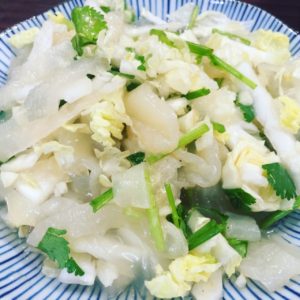A winter evening, wet and cold. Squashed into a tram. When a seat became available, I swooped down into it, finding myself next to a woman who proceeded to cover her nose. As she fanned her face with her other hand, I asked her with gentle concern if she was ok. She responded vehemently and with a force I didn’t expect: “It stinks in here, full of people smelling of onions and curry and shit”. Hmm. We were surrounded by Indians including me.

It’s not the first time I’ve had funny looks and comments about food and smells but the last time was when it was referring to my lunchbox, quite a few decades ago. The incident on the tram made me think about how smells are political (Manasalan). I’m writing about smells in hospitals in a book chapter coming out later this year and I am interested in what makes some public smells acceptable (for example disinfectant) and other more organic smells not so acceptable or even disgusting.
The food that is a salve for the dislocated, lonely, isolated migrant also sets her apart, making her stand out as visibly, gustatorily or olfactorily different. The soul sustaining resource also marks her as different, a risk. If her food is seen as smelly, distasteful, foreign, violent or abnormal, these characteristics can be transposed to her body and to those bodies that resemble her.

Food smells categorise groups of people who are different, and those viewed as negative are seen as a marker of non-western primitiveness. The emotion of disgust is emblematic of the too-near proximity of others and the fear that we might be invaded through our mouths. Probyn writes:
disgust reveals the object in all of its repellent detail, it causes us to step back, and, in that very action, we are also brought within the range of shame
However, nutritional assimilation or sanitisation to become odourless and modern does not guarantee belonging, like citizenship it remains thin when compared to the affective power of ethnic identity. (DeSouza, in press).

I am a committed foodie (defined by Johnston and Baumann, 2010: 61), as ‘somebody with a strong interest in learning about and eating good food who is not directly employed in the food industry’ who is also interested in the politics of food. My partner and I commute to Melbourne, a foodie paradise. Melbourne’s food culture has been made vibrant by the waves of migrants who have put pressure on public institutions, to expand and diversify their gastronomic offerings for a wider range of people. However, our consumption can naturalise and make invisible colonial and racialised relations. Thus the violent histories of invasion and starvation by the first white settlers, the convicts whose theft of food had them sent to Australia and absorbed into the cruel colonial project of poisoning, starving and rationing indigenous people remain hidden from view. So although we might love the food we might not care about the cooks at all as Rhoda Roberts points out:
In Australia, food and culinary delights are always accepted before the differences and backgrounds of the origin of the aroma are.
Sometimes though the acceptance is also class based or related to gentrification take Nick Earles’ point:
But it wasn’t as bad as being the kid from the Italian family who had his “wog” lunch thrown in the bin most days, only to watch the perpetrators spend $10 in cafes 20 years later for the exact same food – focaccia and prosciutto – with no recollection of what they’d done.
It’s been a long time since I’ve experienced someone else’s visible disgust. How to negotiate the smell that is out of place and the identity that does not belong? An ongoing process, but I’ve had plenty of practice.
